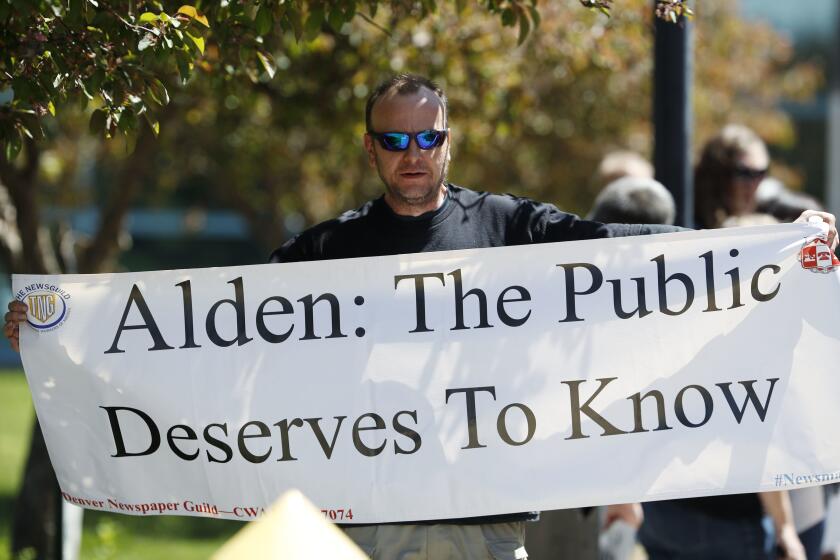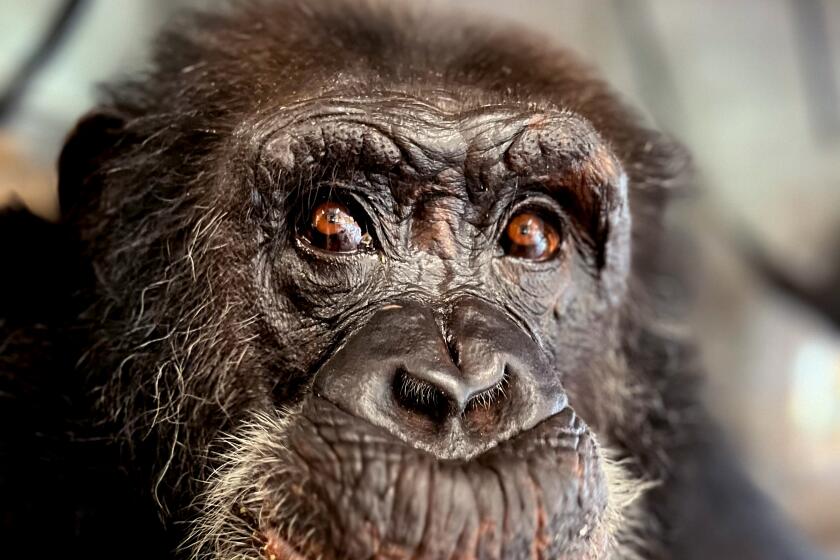L.A. artists, architects’ effect on each other at MAK Center exhibit
“Everything Loose Will Land” has landed. And its timing could hardly be better.
The exhibition at the MAK Center in West Hollywood, curated by UCLA architectural historian and critic Sylvia Lavin, is a wry study of the ways Los Angeles artists and architects worked with, leaned on, stole from and influenced one another in the 1970s.
In a larger sense, it charts the way Southern California architects threw off the influence of establishmen Modernism and helped remake the profession in that decade.
FULL COVERAGE: 2013 Spring arts preview
Packed with mostly small-scale work by artists Judy Chicago, Billy Al Bengston, Robert Smithson, Ed Moses and architects Robert Venturi, Denise Scott Brown, Charles Moore, Cesar Pelli and Frank Gehry, among many others, it is easily the most surprising and opinionated of the exhibitions to open as part of the Getty L.A. architecture series “Pacific Standard Time Presents.”
And it arrives just when that series needed a lift, or at least a show notable more for the strength of its content than the size of its personalities.
Another of the major PSTP exhibitions, the Museum of Contemporary Art’s “A New Sculpturalism,” has slipped into a hapless limbo, with its guest curator, Christopher Mount, worried that the museum may cancel it before a planned June 2 opening.
Earlier the PSTP contribution from the Southern California Institute of Architecture, “A Confederacy of Heretics,” opened amid contentions from SCI-Arc’s own director, architect Eric Owen Moss, that the show was timid and disappointing. Moss’ work from the late 1970s is featured prominently in that exhibition, making his comments all the stranger.
In that context, “Everything Loose” is a relief, a provocation and an example of smart, assured curating all at once. It highlights issues and movements — feminism and environmentalism, in particular — that have so far been peripheral to the PSTP shows.
Taking its title from a quote that is often attributed to but was probably never uttered by Frank Lloyd Wright — “Tip the world over on its side and everything loose will land in Los Angeles” — the exhibition fills the four major rooms in Rudolph Schindler’s 1922 house and studio on Kings Road, which has also operated as the L.A. outpost of Vienna’s MAK Center since 1994. There are also three larger pieces installed in the Schindler House garden.
PHOTOS: Arts and culture in pictures by The Times
The word at the heart of that apocryphal quote — loose — is one Lavin turns to striking curatorial advantage. The idea of looseness — and by extension informality and ad hoc experimentation — is the jerry-built, hand-tuned, happily sputtering engine that drives the exhibition. It’s also a term with obvious connections to gender and sexual mores, which Lavin draws on throughout the show.
Some architectural historians have looked at the 1970s as something of a lost decade, at best transitional and at worst full of second-rate-work. L.A.’s influential, staunchly modernist Case Study program had run its course by then, but Gehry, Moss, Thom Mayne and other experimental local architects were working on small-scale projects and had yet to become widely known.
At least on the surface, the 1970s were dominated, in Los Angeles as elsewhere, by large and often cautious public buildings by establishment firms. It was also a period of political upheaval and environmental anxiety.
But for Lavin this was precisely the decade architecture began to find itself. Or, to be more precise, when it began to dismantle itself, shedding the trappings and obligations of modernism, so it could build itself back up again. It did so as younger independent architects embraced a freewheeling approach, lo-fi instead of high-tech, and began to find common ground with L.A.’s most talented emerging artists.
This overlapping set of influences was among the forces that gave L.A. architecture a distinct and decidedly unorthodox appeal in that period — separate from what became known as Postmodernism, with its decorative ornament and sometimes flimsy references to architectural history.
CHEAT SHEET: Spring Arts Preview
There was very little explicit interest in history in the work of these L.A. artists and architects. Instead they produced paintings, installations and buildings that were deliberately rough and unpolished or explored ephemeral or transitory effects like light and temporary construction.
It was also an era, as Lavin makes clear in the show, when the idea of a “user,” as opposed to a viewer or a client, gained prominence in art and architecture. In part this notion flowed from the politics of the 1960s and the counterculture. But it also was buoyed by new technology, particularly the appearance of personal computer.
The looseness Lavin sets out to chart in the show — and in the accompanying catalog she edited with MAK Director Kimberli Meyer — wasn’t entirely carefree. It was often highly strategic, a way for artists and architects alike to stake out and protect their own creative turf as high modernism and American confidence crumbled around them.
Lavin operates here in something of the same spirit. Choosing looseness as a theme was a canny curatorial move given how quickly the exhibition — like most of the PSTP series — came together and how tricky it can be to use the Schindler House, watched over protectively by preservationists, as a gallery. The exhibition design, by the L.A. firm Johnston Marklee, puts many of the items inside glass domes that look a bit like terrariums.
That sense of slipping experimental work under glass — fixing in history projects by artists and architects who always fiercely resisted being defined or pinned down — gives the exhibition yet another layer of meaning. What does it mean for looseness to land, for experimental work to gain legitimacy or a design-world pedigree?
What does it mean for an institution like the Getty, by funding these PSTP exhibitions, to give its stamp of approval to the kinds of architects it has elsewhere — in building its own hilltop campus in Brentwood, for example — seemed to disdain? How much acclaim, combined with how much historical distance, is required to turn pointedly unorthodox work into its own kind of establishment?
These questions hover over nearly every installation in the show, which is also bolstered by a number of remarkable finds by Lavin. I never knew, for instance, that Ed Ruscha hired Gehry in 1977 to design a conventional-looking, almost generic house for him, a project that does not seem to have gone smoothly for either architect or client.
A collaboration between Chicago, illustrator Carlos Diniz and designer Peter Pearce was also new to me. The project, never executed, proposed a large, almost mountainous structure — Chicago described it as a “ceramic room” — to contain her installation “The Dinner Party,”completed in 1979.
There is also terrific work in the show by artist Terry Schoonhoven, architect Craig Hodgetts and the little-known design group Environmental Communications.
The 1970s was a time, as Lavin puts it in the exhibition catalog, when architecture was “in the process of change rather than achievement.”
The current decade could be described precisely the same way. Architecture is struggling to find direction and meaning, particularly in L.A., after the demise of the celebrity-architect complex and the economic collapse of 2008.
Many young firms are turning away from form-making for its own sake and pursuing new kinds of architectural innovation, largely connected to technology collaboration or inexpensive, bottom-up efforts to remake cities. Worries about the environment are again on the rise.
Those parallels give “Everything Loose” — above and beyond its fresh assessments of early work by a range of now-famous figures — a subtle but important connection to contemporary culture.
Architecture feels a bit unmoored at the moment. But as the show implies, that uncertainty offers freedom and opportunity.
christopher.hawthorne@latimes.com
More to Read
The biggest entertainment stories
Get our big stories about Hollywood, film, television, music, arts, culture and more right in your inbox as soon as they publish.
You may occasionally receive promotional content from the Los Angeles Times.































































































































